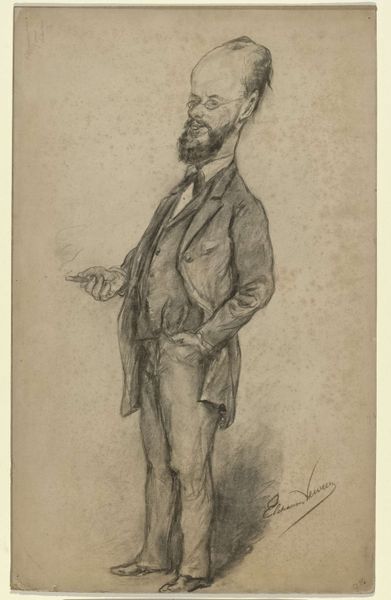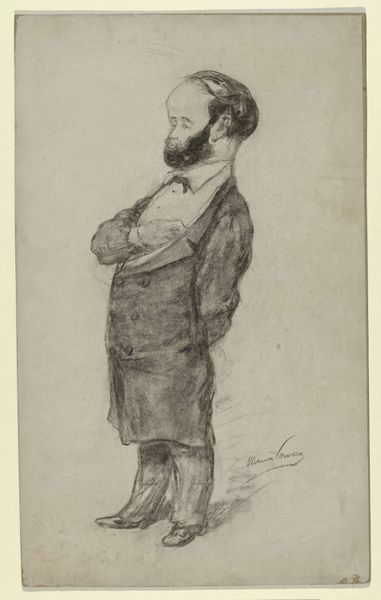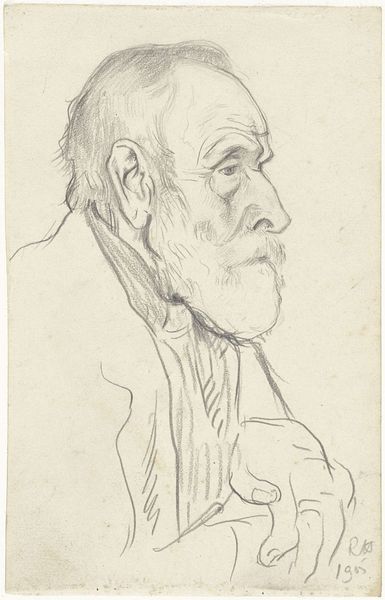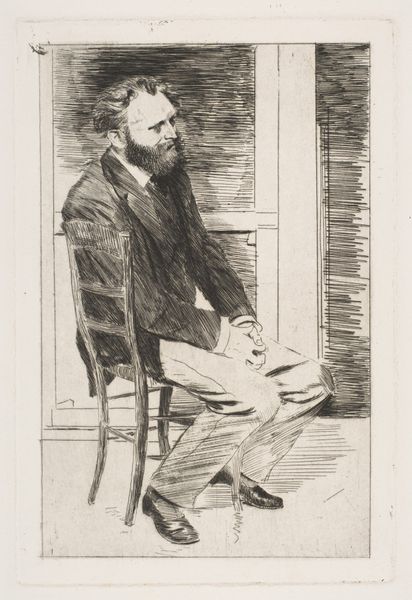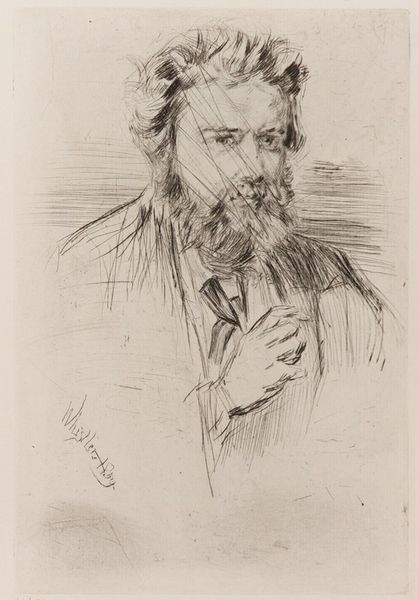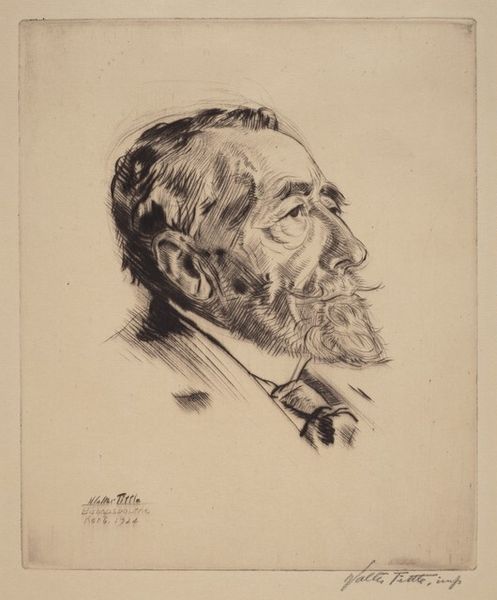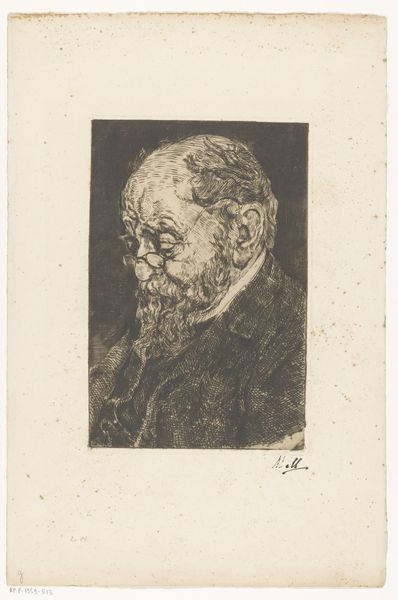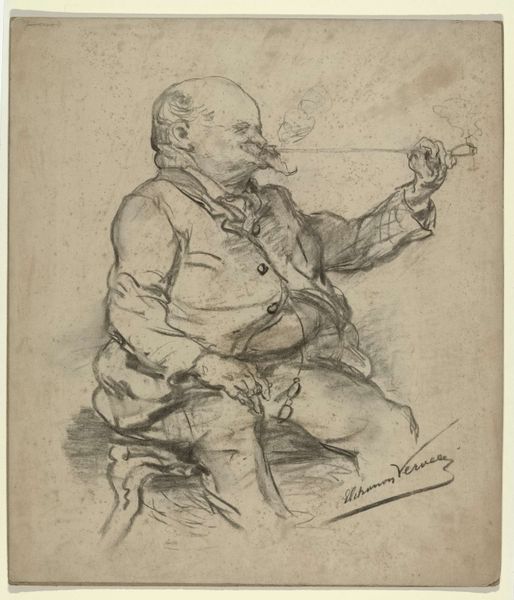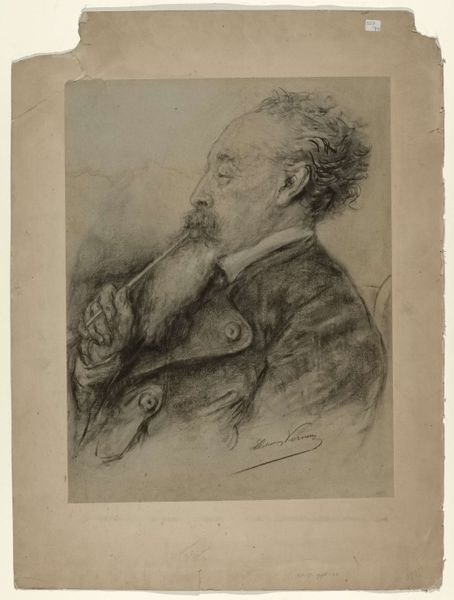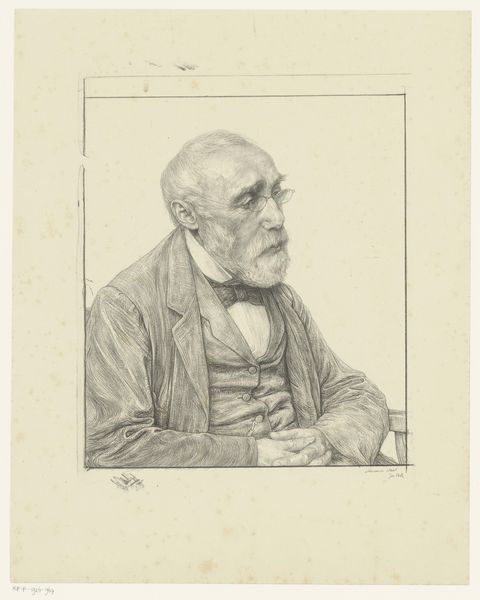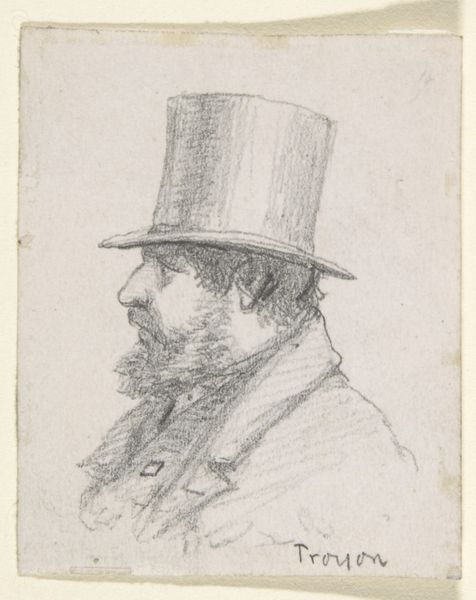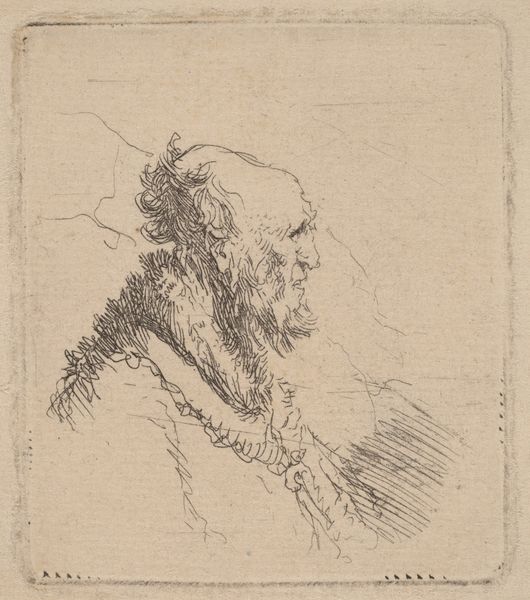
drawing, charcoal
#
portrait
#
drawing
#
charcoal drawing
#
pencil drawing
#
portrait drawing
#
charcoal
#
realism
Dimensions: height 730 mm, width 483 mm
Copyright: Rijks Museum: Open Domain
Curator: Before us is a "Caricature Portrait of Willem Roelofs" by Elchanon Verveer, dating from between 1850 and 1897. The piece is rendered in charcoal. Editor: It strikes me as rather imposing. There’s a sense of almost...overbearing masculinity, yet somehow softened by the caricature and the medium. He seems rather sure of himself. Curator: I think the choice of charcoal is vital here. The rough texture contributes to the caricature; you can practically feel the grain of the paper, reminding us of the labour involved in producing such a quick sketch, especially if this was churned out like some others to serve the bourgeoisie. The relative cost of charcoal versus, say, oils meant this may have been much more accessible, reaching a broader audience beyond traditional art patrons. Editor: The portrait also presents an interesting lens through which to consider gendered expectations and social standing of the era. The confident posture, the somewhat exaggerated beard—they contribute to a very particular visual representation of male authority within Dutch society. What might be particularly interesting to consider here is whether or not Roelofs might have had something of an anti-establishment streak to be mocked this way by his contemporary. Curator: Absolutely. It challenges the usual hierarchies we see in formal portraiture. Caricature inherently mocks and critiques its subject and suggests a dialogue of power dynamics at play between the artist, the sitter and potentially, a patron looking for a fun take on the master artist's image. How was the labor and skill deployed to, almost demean Willem Roelofs while honoring him? Editor: Considering the date of execution, Roelofs also emerges as an important figure involved in the rise of Realism as an influential art movement. The charcoal highlights the almost brutish and confrontational qualities of art and portraiture itself. This piece offers us not merely an image of Willem Roelofs, but also a snapshot of broader societal power struggles and their manifestation within artistic communities. Curator: Looking closely at the mark-making and medium reveals the materiality of social relationships and power within 19th century artistic circles. It's more than just a portrait. It’s also the documentation of class dynamics. Editor: Agreed. The context helps unlock layers within this seemingly simple drawing. Curator: Indeed. It's about more than just form, it's about formation of art history.
Comments
No comments
Be the first to comment and join the conversation on the ultimate creative platform.
